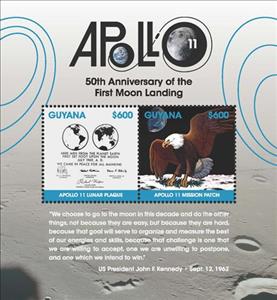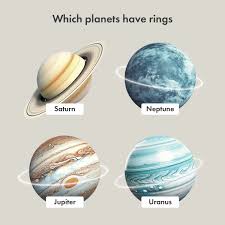Souvenir Sheet: 50th Anniversary of the First Moonlanding (Guyana 2018)
50th Anniversary of the First Moonlanding (Guyana 2018)
20 November (Guyana ) within release 50th Anniversary of the First Moon Landing goes into circulation Souvenir Sheet 50th Anniversary of the First Moonlanding face value 1,200 Guyanese dollar
| Souvenir Sheet 50th Anniversary of the First Moonlanding in catalogues | |
|---|---|
| Colnect codes: | Col: GY 2018-02 |
Souvenir Sheet is square format.
Also in the issue 50th Anniversary of the First Moon Landing:
- Souvenir Sheet - 50th Anniversary of the First Moonlanding face value 1,200;
- Mini Sheet - 50th Anniversary of the First Moonlanding face value 1,650;
- Stamp - Apollo 11 Lunar Plaque face value 600;
- Stamp - Apollo 11 Mission Patch Showing Eagle face value 600;
- Stamp - Astronaut Buzz Aldrin face value 200;
- Stamp - Astronaut Buzz Aldrin Descending Ladder from Eagle onto Moo… face value 300;
- Stamp - Astronaut Buzz Aldrin Walking on Moon face value 350;
- Stamp - The Eagle in Space face value 250;
- Stamp - The Earth from Space, 1969 face value 150;
- Stamp - The Moon from Space, 1969 face value 400;
Souvenir Sheet 50th Anniversary of the First Moonlanding it reflects the thematic directions:
Eagle is the common name for the golden eagle, bald eagle, and other birds of prey in the family Accipitridae. Eagles belong to several groups of genera, some of which are closely related. True eagles comprise the genus Aquila. Most of the 68 species of eagles are from Eurasia and Africa. Outside this area, just 14 species can be found—two in North America, nine in Central and South America, and three in Australia.
A globe is a spherical model of Earth, of some other celestial body, or of the celestial sphere. Globes serve purposes similar to maps, but, unlike maps, they do not distort the surface that they portray except to scale it down. A model globe of Earth is called a terrestrial globe. A model globe of the celestial sphere is called a celestial globe
The Moon is Earth's only natural satellite. It orbits at an average distance of 384,400 km (238,900 mi), about 30 times the diameter of Earth. Tidal forces between Earth and the Moon have over time synchronized the Moon's orbital period (lunar month) with its rotation period (lunar day) at 29.5 Earth days, causing the same side of the Moon to always face Earth. The Moon's gravitational pull – and to a lesser extent, the Sun's – are the main drivers of Earth's tides.
Outer space (or simply space) is the expanse that exists beyond Earth's atmosphere and between celestial bodies. It contains ultra-low levels of particle densities, constituting a near-perfect vacuum of predominantly hydrogen and helium plasma, permeated by electromagnetic radiation, cosmic rays, neutrinos, magnetic fields and dust. The baseline temperature of outer space, as set by the background radiation from the Big Bang, is 2.7 kelvins (−270 °C; −455 °F)
A planet is a large, rounded astronomical body that is generally required to be in orbit around a star, stellar remnant, or brown dwarf, and is not one itself. The Solar System has eight planets by the most restrictive definition of the term: the terrestrial planets Mercury, Venus, Earth, and Mars, and the giant planets Jupiter, Saturn, Uranus, and Neptune. The best available theory of planet formation is the nebular hypothesis, which posits that an interstellar cloud collapses out of a nebula to create a young protostar orbited by a protoplanetary disk. Planets grow in this disk by the gradual accumulation of material driven by gravity, a process called accretion.





